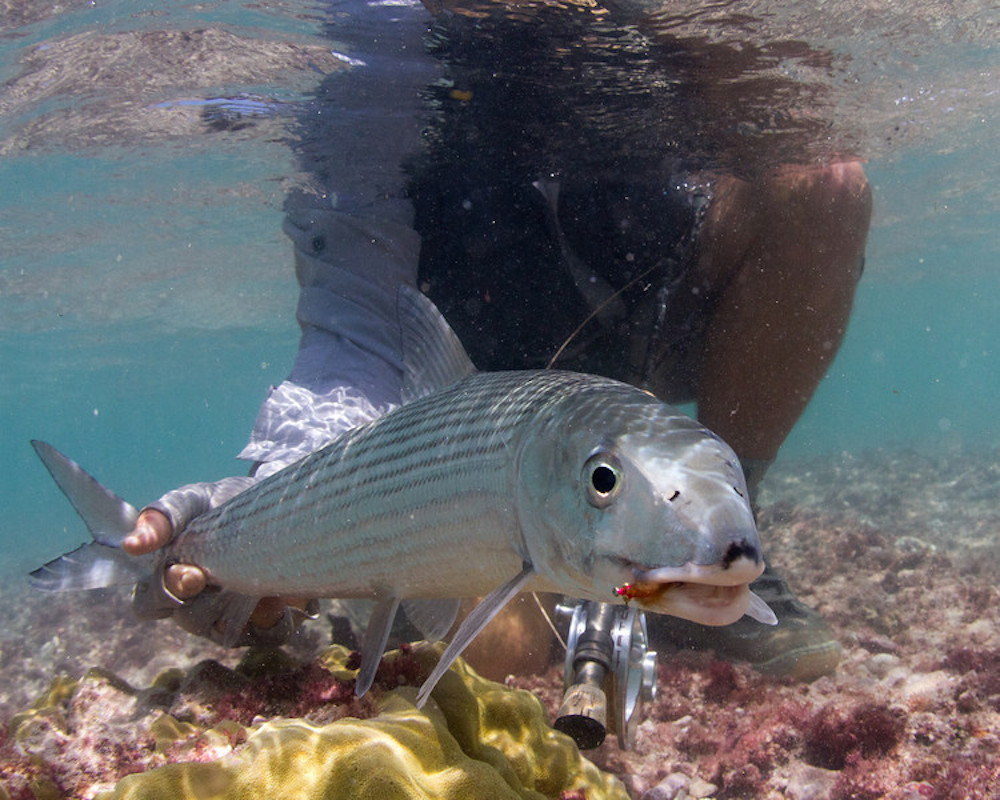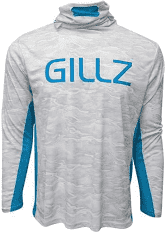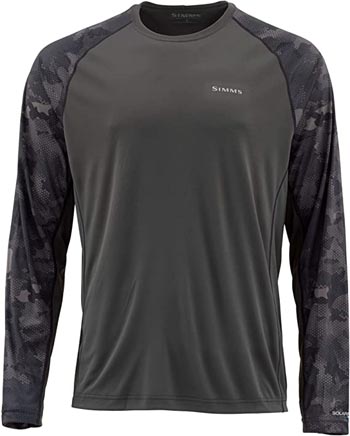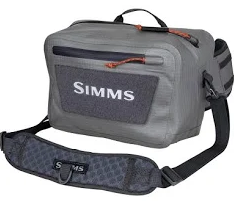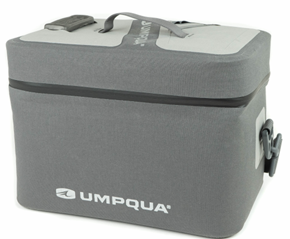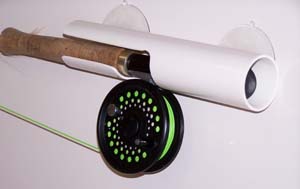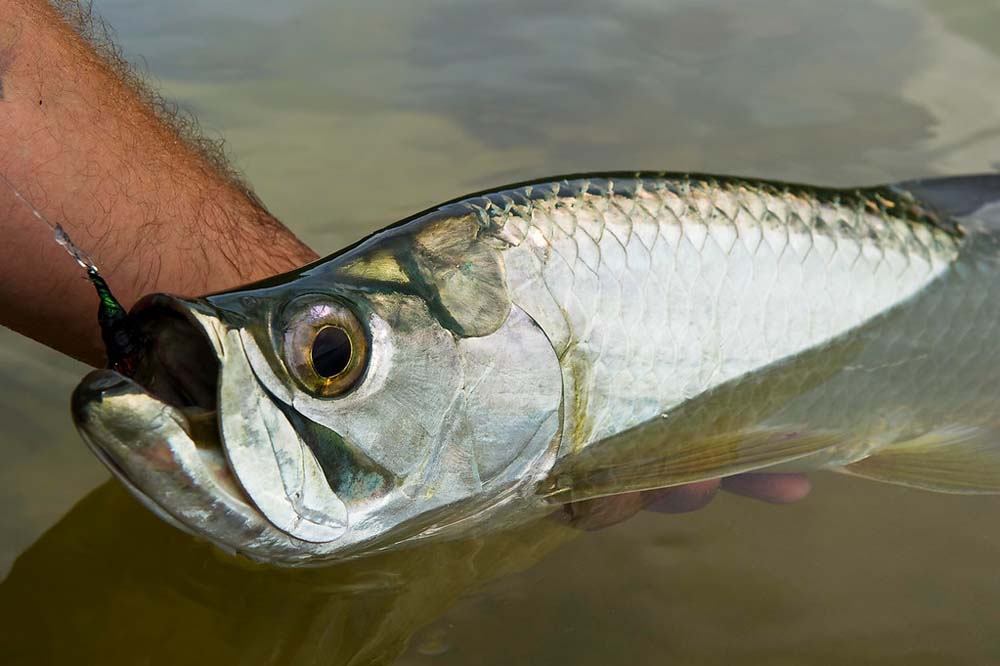
Ambergris Caye, Belize. Small tarpon will readily take a bonefish fly, especially if you’re pitching to tailing bones near mangrove. Photo: Jim Klug – Yellow Dog Flyfishing.
Rods, reels, leaders, flies, and what to wear to the Bonefish Ball
By Skip Clement
Contributors Captain Andrew Derr / Tom Karrow, Ph.D. / Chico Fernandez / Peter McLeod / Aaron Adams, Ph.D. / Sandy Moret / Jim Klug / Norman Duncan
Author’s Statement: In this Part VI it is not my intent, nor those contributing, to suggest you bring toothpaste, lip balm, meds, comfy pajamas, or lodge lounge attire.
As an opinion piece, it is not a fact that you should bring three fly rods, four, two, an 8-weight, 9-weight; specific count, size, and weights of flies, or certain brands of anything, but instead suggest item ‘types’ in this article make for having a successful bonefish destination experience.
Fly rods: ‘A quality rod is mandatory’
By Captain Andrew Derr
Bonefish are sight fished, so there is rarely blind casting, a practice that can tire or bore an angler in any climate. Sevens and eights are the most common rods when fly fishing for bonefish. With today’s rod builds, these weight rods are fast, light, strong and when properly lined can cut through the wind to deliver bonefish flies of any size. Some prefer 6-weights when it’s dead calm or in locales with small bones [2-4#]. Some less skilled anglers will choose a med-fast weight rod to simplify the casting stroke but most stick with fast action because of frequent wind and weighted flies. Very high winds while targeting double digit bones or entertaining the chance of permit encounters may persuade one to choose a 9-weight.
SIDEBAR: Experienced flats anglers, who regularly destination fish, say that the most significant fly rod mistakes amateur travelers make is not having a backup rod they like and can comfortably cast. A trip costing several thousand dollars shouldn’t be marred by skimping on fishing gear not up to the task at hand.
Fast running fish need a reel with a quality drag system and a rod with backbone and quality components that won’t fail when far from any shop that could provide a possible replacement. Multiple leaders, spare fly lines and fresh quality spools of tippets in multiple sizes are a no-brainer needs on trips to remote locations – along with tool to deal with them.
A high quality fly rod is mandatory if you want to have a successful bonefishing experience. That does not mean you must purchase a $1,000 rod, but thoughtful research, practice casting with the rod you choose, and a trip a trip to your favorite fly shop is recommended. I cannot stress enough the importance of practicing with your setup prior to your fishing trip. Learning under the pressure of an approaching fish is asking for frustration for yourself and your guide alike.

Photo: Jim Klug – Yellow Dog Flyfishing.
There are good fly rods under $400
A smaller fly shop might only stock or rep one or two fly rod companies, but they won’t be representing Walmart or big box store brands, and they will have sevens and eights for you to try on for size. There are decent rods at Bass Pro/Cabela’s – even Walmart, but for large powerful saltwater gamefish, you’ll want to be packing more dependable, quality gear.
NOTE: Some fly shops might even have used rods and reels of good quality – from time to time. Almost all have demo rods to cast with before buying. Frequently, they will offload discontinued models with more accessible pricing at certain times of year (late winter/early Spring).
NOTE: A backup fly rod need will come into play sooner than later if you destination fish a few times a year. A decent one that you can cast well is a smart idea when ponying up for an expensive destination fishing trip. The last thing you’ll want is to be under-gunned and frustrated when on your “dream trip”.
Does a backup fly rod need to be almost as good as your first choice? No, but it should be dependable, stout and one that is familiar to its owner.
Reels
With assurance, guides and tournament-level bonefishers think the reel may be more important than the fly rod. Decades ago, Florida Keys guides learned how to palm outgoing fly line on a bonefish [and tarpon], but today an amateur or experienced fly fisher palming the runs of any flats fish is the quintessential meaning of dumb idea. A good video I saw on YouTube shows a capable angler [good caster] palming a reel, attempting to halt a 50-pound GT on the run in the Cosmoledo Atoll [Seychelles] surf and snapping it off and claiming the fish cut line on coral. However, the trevally was clearly caught in the surf, and never ran much beyond the surf, just east and west of it in deeper water.
No coral involved, his palming probably caused snapping the fish off. In fairness, he might have had a lousy reel with a rough drag system.

Nautilus® NV-CCF
Classic Nautilus® designed reel machining is noticeably intricate. Nautilus maintains lightest big game reels in their class. Patented NV-CCF draw bar cork and carbon fiber braking system. From 0-12+lbs in one and a half turns.
Ceramic hybrid bearings, thrust bearings, and a titanium drag shaft make the drag system no one can touch (the patent also helps).
Quality reels have reliable drag systems
Some overseas reels simply flirt with you on price, but their endurance and reliability may be questionable. That is my experience, and thus, an opinion. The high end of quality costs $2,200 [Mako] or $1,000 for a Seigler, and an equal for a quality bonefish reel is Nautilus [$625 +/-]. Other quality manufacturers include Abel, Hatch, Lamson, 3Tand, Ross, Hardy, Tibor, etc. Your local fly shop is a good source of reel information.
What a reel must do to be reliable
- A reel with a serious drag system keeps measured pressure at all times on running fish and, in particular, does not stall, skip, pulse or lag on startup, causing, for example, a 2-pound setting to be a 14-pound resistance for that nano-second and snap 12-pound test tippet. Game over.
- A poor drag system will often reveal that it’s subpar on fish runs because it will start to pulse – in and out of the setting, which may snap the class tippet while not doing its advertised job.
When a bonefish [any fish] sees the boat and is only a few feet away from hand or net capture, it will make a bursting run, again testing the drag. A poor drag system will often recreate the startup issue previously mentioned, but only worse – exceeding the pound test setting for a moment in time at a greater pressure, and snap the tippet.
Backing
My general rule of thumb is that 200 yards of 20# dacron backing will handle just about any bonefishing scenario. Larger capacity reels will fit more or allow for 30# backing that will provide slightly more abrasion resistance on rocks and coral heads.
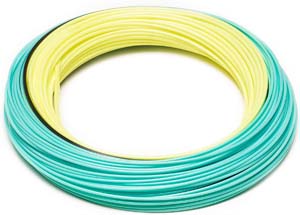
RIO Products’ Elite Bonefish Fly Fishing Line, Designed with A Long Head and Back Taper for Precise Presentations to Spooky Fish, Yellow/Black/Aqua, 100ft, WF8F.
Fly Lines, floating more than usually
Generally, bonefish do not like front-loaded, fat-headed lines plunking down on a relatively calm water. Most seasoned anglers prefer long-headed lines that will land more gently. RIO Elite Bonefish Fly Line and like quality lines from other manufacturers are good choices. However, an entry level caster may choose a shorter head to load the rod more easily and get his shot off more quickly, sacrificing some stealth along the way.
NOTE: Be quick to replace your fly line if it shows wear from coral or has cracks. Bringing a line cleaner/dressing with you on a bonefish expedition is a great idea. It will improve castability and provide soothing comfort while casting. Salt and dirt build-up can occur. Cleaning line is smart recommendation as salt and dirt build up does affect the castability of fly lines.
Leader build, probably the most important piece of equipment in fly fishing
NOTE: You can have $1,000 fly rod and a leader built by a fool and the rod would fail even with the best of fly casters.
Leader build preferences are still subject to fealty. As far as I can tell, the Brits had ‘formulae’ leader builds eons ago – Lefty Kreh got fly fishers’ attention with his ‘formulae’ leader builds. His started with leader butt X-pound test and Y- length, then half the length of the butt in the next section with a lesser diameter [pound test], and so on, then a tippet of lesser strength/diameter than its attached to – for bonefish that’s usually 8- to no more than 16-pound test mono, generally.
Today, there are many iterations of Lefty’s formulae: Bruce Chard, Peter McLeod, Oliver White, Andrew Derr, Tom Karrow, Aaron Adams, Chico Fernandez, Sandy Moret, Angie Roth, Norman Duncan – all have theirs and then, there’s yours, of course.
 Popular across the board though is hard-mono leader like RIO Hard Mono Saltwater Tippet, and others. Rio’s hard monofilament is super abrasion-resistant nylon monofilament material and one of the easiest of all hard-mono materials to knot. Also, the step-down leader builds as described require, in some cases, as many a six joining knots [some think that’s an issue], and usually blood knots except when joining the tippet in fluorocarbon, which then becomes a diameter consideration, not pound test. The diameter of 12-pound test monofilament is 0.35mm and the equivalent fluorocarbon diameter is 15-pound-test. So a stronger knot, Surgeons Knot [or your preferred], is required to tie monofilament to fluorocarbon.
Popular across the board though is hard-mono leader like RIO Hard Mono Saltwater Tippet, and others. Rio’s hard monofilament is super abrasion-resistant nylon monofilament material and one of the easiest of all hard-mono materials to knot. Also, the step-down leader builds as described require, in some cases, as many a six joining knots [some think that’s an issue], and usually blood knots except when joining the tippet in fluorocarbon, which then becomes a diameter consideration, not pound test. The diameter of 12-pound test monofilament is 0.35mm and the equivalent fluorocarbon diameter is 15-pound-test. So a stronger knot, Surgeons Knot [or your preferred], is required to tie monofilament to fluorocarbon.
Flip Pallot’s fly line to complete leader system
As a personal preference, I have adopted Flip Pallot’s strategy and it is simple and auto improved my fly delivery. And, guess what, it’s much simpler than most others. The butt section is chosen not by pound-test, but by stiffness and mass, which is the seldom paid attention to specification – the lines’ measurement in diameter expressed thousandths. For example, a 25-pound test monofilament from manufacturer “A” could be .023, and from manufacturer “B” 40-pound test but only .020 in diameter or mass.
The rest of the selection for the butt is stiffness, and the entire focus there on complementing the unfurling with no hump – eliminating the factory loop in fly line. When the connection, fly line to butt, are humpless and form a ‘bell curve,’ all is good, and the line will be on its way to a smooth unfurling.
The transition from a mono butt of, say 9-feet, to a transition of maybe a foot or less of mono in lesser diameter and pound test, then a foot or more of tippet in fluorocarbon, which will be a slightly stronger than mono, nearer to the refraction of water, heavier than mono, but close in diameter [in this setup], complementing the unfurling of the fly line, leader, and fly.
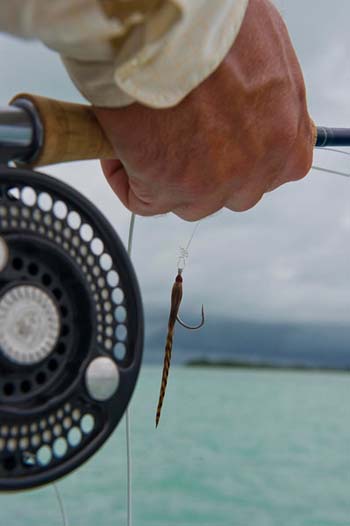
Photo: Jim Klug – Yellow Dog Flyfishing.
Lots of loops in fly line leaders are not necessarily your friend
Some anglers prefer to cut the fly line welded factory loop off and attach fly line to leader butt with a simple Nail Knot [Flip Pallot]. This practice helps, considerably, with unfurling the energy that the line has built up in a haul cast. It should be noted that stiff monofilament leader line is also a good choice [as mentioned] to continue the best possible unfurling of the line and fly. This choice is also one that eliminates the use of multiple step-down knots with a long ‘permanent’ butt section, preferred mid section, then a tippet of preferred length of fluorocarbon material, and a loop knot attaching the fly. The latter allowing the fly to ‘swim’ freely, not possibly offset as a knot anchored to the eye of the hook would.
NOTE: Loop knot types, Pitzen Knot [Fisherman’s Knot], Non-slip Loop Knot, Homer Rhodes Knot, or whatever your guide decides is best or you are comfortable tying.
Flies
NOTE: Scandinavian, and a few US and Canadian, anglers have gone to tube flies, which demonstrably improves hook ups, no matter the quarry – assuming the fly you use is the right one.
NOTE: There are over 400 YouTube videos making mention of bonefish flies or having titles like ‘THESE’ 5, 8, 10, or 20 are the best bonefish flies, and like many of today’s YouTubers they will claim knowledge of the best anything, but reality is they are morons craving a place in the sun and have as much knowledge and trustworthiness as a gaggle of politicians.
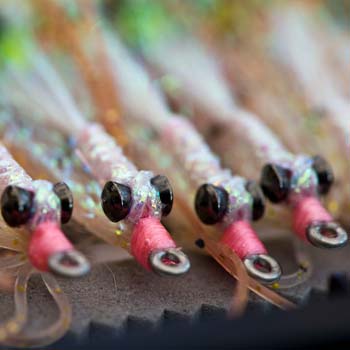
Photo: Jim Klug – Yellow Dog Flyfishing.
Flies are a personal choice
However, it is accepted that a some flies have a history of success at multiple destinations, and catch bonefish. A Mantis Shrimp, Bonefish Bitters, and Gotcha flies tied in varying ‘eye’ weights, colors, and different sizes is better than arriving in the Seychelles, Bahamas, Belize, Mexico, or Honduras with a trunk full of online purchased bonefish flies.
Always carry some unweighted flies (Bonefish Special, Snapping Shrimp), medium weighted flies (Bitters, Puffs, bead chain patterns), heavily weighted (lead yes, etc…), crab patterns, Venezuela (baitfish patterns).
NOTE: Your guide/captain in the Bahamas, Mexico, Belize, and most other destinations will select the bonefish fly from your offerings or skip that altogether and hand you the day’s winner from his tying bench. You paid hard-earned money to be on a destination trip; pay attention to your guide. He knows far more than you ever will. Be open with your guide about your skill level, it will put you in the best possible position to catch a bone on the first cast. BS doesn’t even catch a cold. — Tom Karrow

Wide brimmed Tilley hat.
Top to bottom, head to toe it’s about UV and comfort
- Baseball cap with dark underside bill to cut glare, yes, it makes a difference. A vented trucker cap keeps a cool head. A Tilley like hat with wide 360° coverage brim, vented, sturdy, and a great rain hat – mine is over 12 years old.
- Neck Gaiter with breathing holes can be a separate item or attached to a shirt with lycra type fabric and at least UPF 50 UV protection. The mistake most often made is the buff slips down below the nose and creates a proboscis issue and exposes ears that get easily fried. Getting sunburned is painful but more importantly a gateway to melanoma cancer. Even darker skinned folks need to take care. Your office exposure hasn’t earned a free pass to not getting burnt.
- Sunscreen in its many formulations require reapplying, often. It gets forgotten often and the result is obvious. Too, the stuff of sunscreen is often ‘creamy’ and gets more that way in the heat of the day. And sunscreen is an effing mess to deal with. It easily transfers to flies, leader line and tippet and the outcome can be rejection from bonefish that count on a keen sense of smell to survive. Although the jury is out on that call.
- With today’s fabrics many feel protected enough by their ’50’ rated clothing: shirts, buffs, hats, and pants or swim leggings to skip sunscreen altogether, but it might be prudent to have it handy. The choices for sunscreen abound.
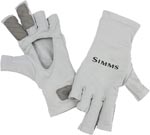 Swim Leggings, not just leggings. Get those meant to stay wet in fresh or saltwater
Swim Leggings, not just leggings. Get those meant to stay wet in fresh or saltwater

Simms Zipit II Flats Booties.
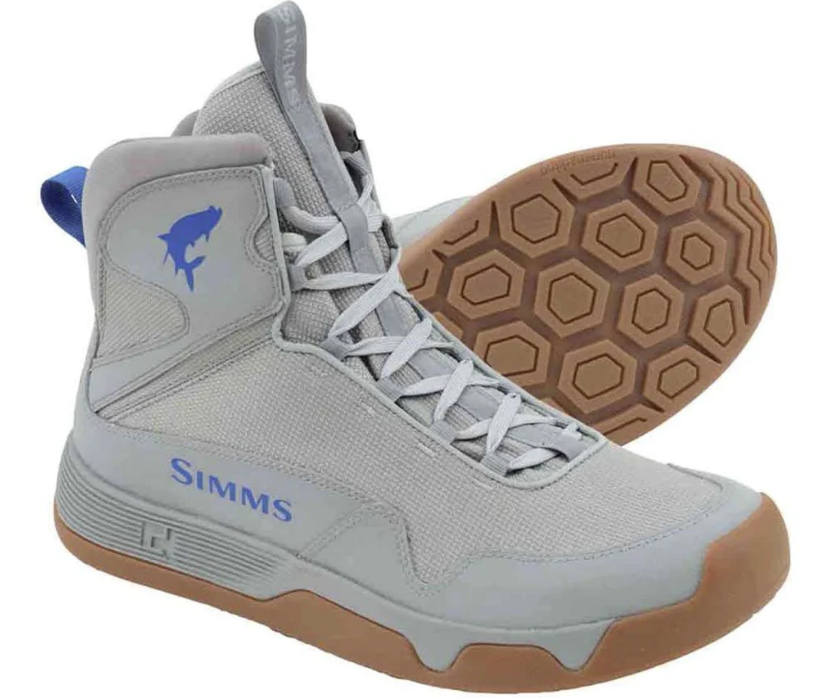
Simms New Flats Sneaker
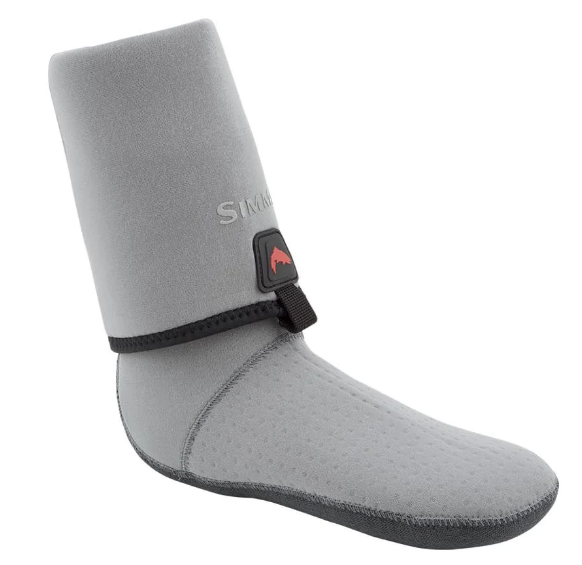
Simms® Guide Guard Wading Socks


